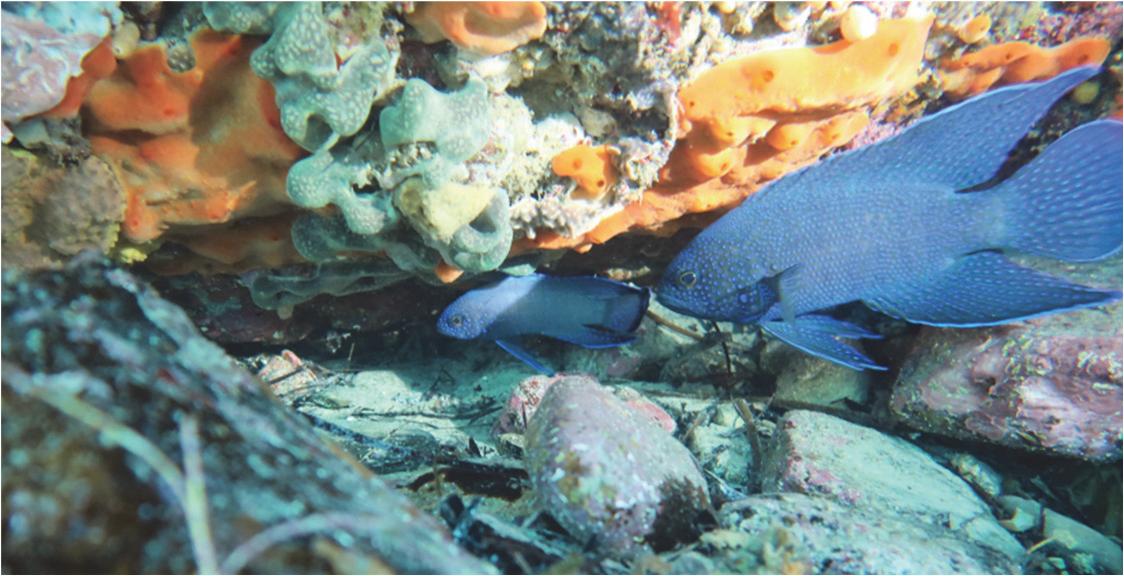
4 minute read
Pretty Fishes of Yankalilla Bay
Photo: Adult with juvenile Southern Blue Devil
Pretty Fishes of Yankalilla Bay with Dr David Muirhead
Southern Blue Devil
(Paraplesiops meleagris)
We're all hoping for a big year so I've chosen a somewhat bigger fish than the last few. Our iconic Southern Blue Devil is often known locally simply as Blue Devil .Its the only SA member of it's Family (Plesiopidae) that exceeds an SL* of 15cm. Adult Southern Blue Devils can reach SLs of at least 33cm, and are occasionally hooked by recreational fishers, usually from boats anchored over rocky reef. They're very popular with divers, for their sheer beauty and as photographic subjects. These attributes are helped by their very inquisitive nature. Blue Devils habitually emerge from their ledge or lair to park themselves sideways - often within arm's length - to display those magnificent colours and patterns, and its not only novice divers who stop to gawk in amazement! Recent studies have further increased our admiration of this stunning fish. We now know they can live for up to at least 40 years, probably 50. And we now know that no two individuals, even as juveniles, look identical. Each has slightly different arrangement and degree of blueness of their many dots, spots, rings and other pattern detail. And while we knew they are strongly territorial, with individuals being seen in particular caves, with photographic proof, over many years, till recently we didn't know much about their breeding habits. Breeding pairs guard small batches of eggs on rock surfaces in narrow rock crevices; usually vertical crevices at the back of caves and wider ledges. That said, while little firm data is available as to whether populations are in decline, given their dependence on healthy rock reefs - often quite close to shore - a habitat type known to be in decline in many coastal areas of SA, Reef Watch lists them as "In Peril". Let's hope future generations of divers and snorkelers can swoon at their first sight of one of the world's most beautiful—and inquisitive - fish. That's certainly not something anyone can take for granted. With - or without - anthropogenic climate change.
*[Standard Length (SL) is fish 'geek-speak' for how long a fish is from head to base of tailfin, as apposed to the Total Length (TL) which includes the tail fin. I, like most divers I know, prefer using TL. Simpler and intuitive when telling buddies roughly how long an interesting fish seen on a dive was. Except for the rare occasions when we see a fish with a tail almost as long it's body, but at safe SCUBA diving depths there are very few such species in SA. Plenty with long thin tapering rear bodies eg. lings and eels, but with those the actual tail fin (aka Caudal fin: that rayed membranous appendage without any flesh) is still quite short. It is however often impossible to see clearly where the flesh ends and a caudal fin begins. Bored with all this trivia about lengths? This might grab your attention. Thresher Sharks, which are harmless but do occur in Yankalilla Bay, can reach a TL of 5.7 metres! They're the perfect example of a fish where this TL/SL definition thing is important. A Thresher shark's TL is almost double it's SL, courtesy of the extremely long, scythe-like upper lobe of the caudal fin!]
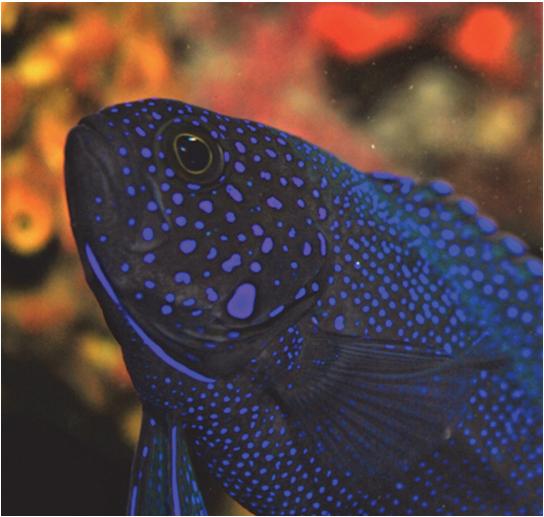
Beautiful, smallish SBD, depth 4.5m, Carrickalinga Reef January 2017
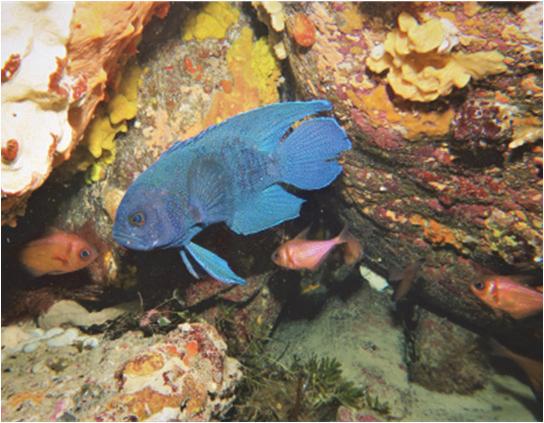
SBD (Adult) with bullseyes, SV, October 2019
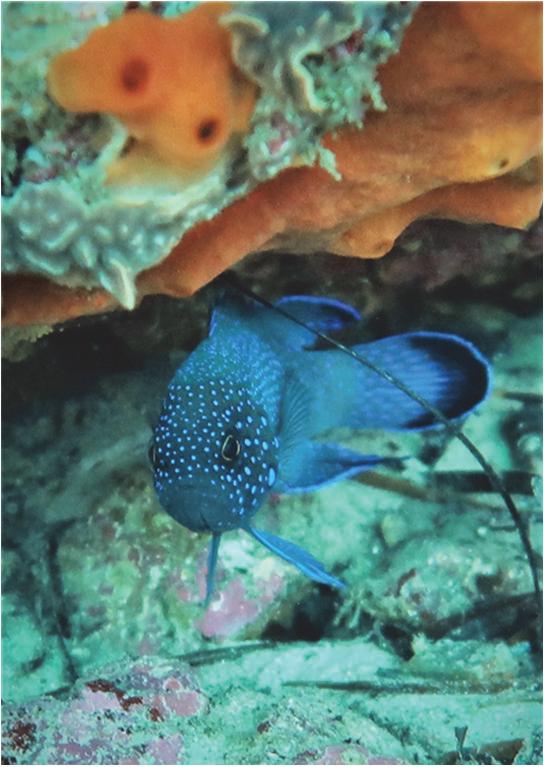
Immature Southern Blue Devil, Second Valley, March 2021
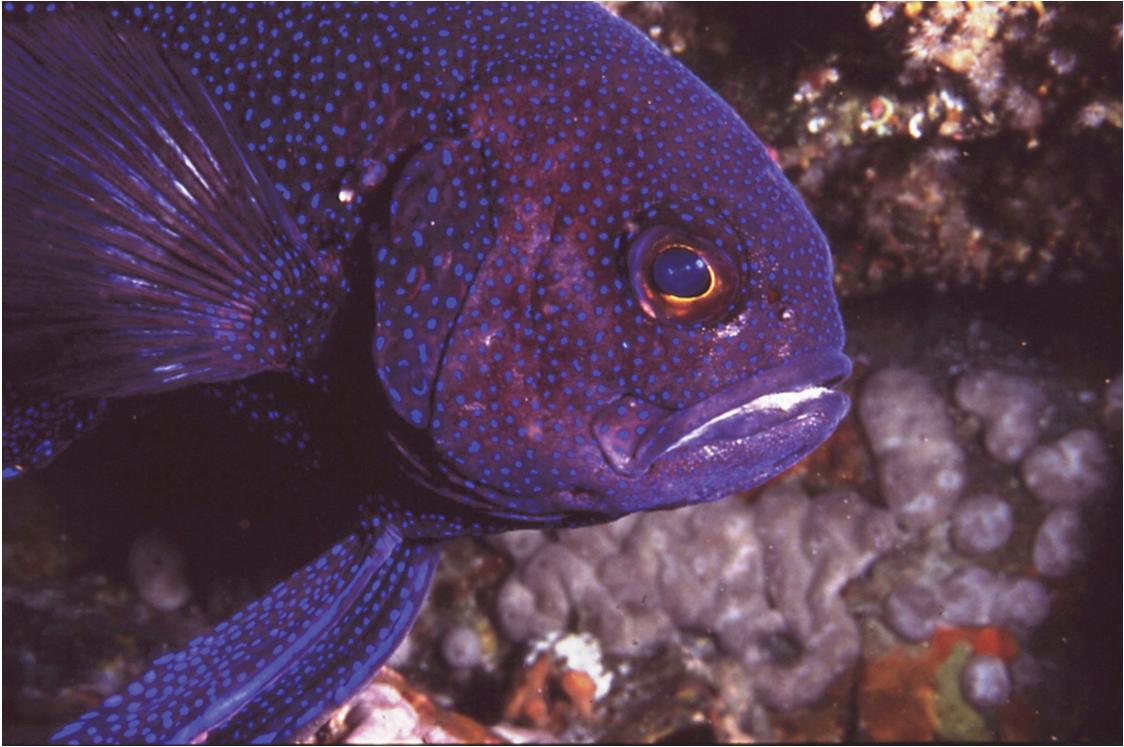
SBD giving me the eyeball treatment, SV off the promontory


